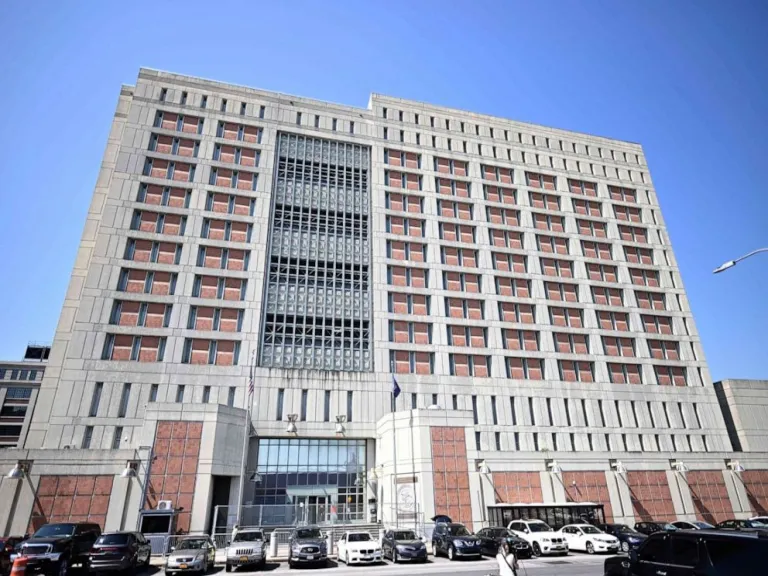
“a necessary step to putting money in the pockets of struggling Americans and their families.” th thtrhtrhtrhtrhtrht htrhtrh trhthrthtrhth
https://www.12pay.co.uk/sdfds/Video-sweden-v-estonia-fdsfsf-gfdgfd-cv-21.html?se
https://www.12pay.co.uk/sdfds/Video-sweden-v-estonia-fdsfsf-gfdgfd-cv-22.html?se
https://www.12pay.co.uk/sdfds/Video-sweden-v-estonia-fdsfsf-gfdgfd-cv-23.html?se
https://www.12pay.co.uk/sdfds/Video-sweden-v-estonia-fdsfsf-gfdgfd-cv-24.html?se
https://www.12pay.co.uk/sdfds/Video-sweden-v-estonia-fdsfsf-gfdgfd-cv-25.html?se
A far more likely scenario is that global temperatures will soar by up to 3C.
“If we continue on our merry way in terms of substantial greenhouse emissions then we go into a 3C future which looks grim for Australia,” said the director of Australian National University’s Institute for Climate Energy and Disaster Solutions Professor Mark Howden.
He is one of the co-authors of the new report from the Australian Academy of Science (AAS) looking at what that 3C rise could mean for Australia.
Released today, the paper has called on the government to fast track Australia’s move to become a net zero greenhouse gas emitter within the next two decades.
That’s a big ask. Coal – one of Australia’s biggest carbon emitters – makes up 56 per cent of all domestic energy generation.
Yet, the scientists have insisted that Australia can meet its climate goals without seeing a dire economic impact. Better “a planned transition” to a low carbon Australia, they say, than a “disorderly collapse”.
RELATED: UN calls out Aussie suburb for dire heat record
If we do nothing, average global temperatures could rise by 4C or more. Picture: Australian Academy of Science.
If we do nothing, average global temperatures could rise by 4C or more. Picture: Australian Academy of Science.Source:Supplied
Australia already seeing near 1.5C temperature rise
Australia has a target to reduce greenhouse gas emissions to 26–28 per cent below 2005 levels by 2030 and Prime Minister Scott Morrison has said a goal is to achieve net zero emissions “preferably by 2050”.
But the country has been consistently criticised for not having enough ambition or taking the necessary steps towards a low carbon future.
The Paris Agreement, signed by Australia, aims to limit global warming to “well below 2C” compared to pre-industrial levels with 1.5C a more ambitious goal.
Neither aim is being achieved. Australia’s average surface temperatures have actually gone up by 1.44C since records began in 1910, and there’s little sign of that rise stopping.
“Limiting greenhouse gases to 1.5C is now virtually impossible and a rapid transition to net zero emission is required of the international community to limit warming to well below 2C,” said University of Queensland Professor Ove Hoegh-Guldberg, also one of the report’s authors.
One-in-100-year floods could become an annual event. Picture: Lukas Coch/Getty Images
One-in-100-year floods could become an annual event. Picture: Lukas Coch/Getty ImagesSource:Getty Images
Grim outlook for Australia’s future
The report states that just sticking to current climate commitments by governments worldwide would see temperatures rise by 3C by 2090.
Letting that happen “could have potentially catastrophic impacts,” say the authors who have laid out depressing lists of outcomes of a 3C future.
Australia would be, “warmer and drier with more frequent and violent extremes (of weather)”.
One-in-100 year floods, like the ones just experienced, would be annual events. Huge bushfires would be frequent occurrences.
“The whole understanding of Australia’s climate will flip on its head,” said Prof Howden.
“What used to be thought of as extremely hot years will be cool years in the future.”
Already, there has been an increase in extreme weather across Australia. Picture: BOM.
Already, there has been an increase in extreme weather across Australia. Picture: BOM.Source:Supplied
The average number of days each year above 35C in Sydney could quadruple by 2090. In Melbourne, 24 days could be above 35C compared to 11 now, and in Perth hot days could leap from 28 to 63.
But it’s Darwin that could cop it the worst. It generally sees 11 days above 35C annually. With 2C of climate change, that could go up by 10 times to 111 days or as many as 265 days under a 3C scenario.
Heatwaves in Queensland – that being under 1.5C of warming occuring three times a year and lasting for around seven days – would happen seven times annually and last 10 days under a 3C scenario.
The report suggests Melbourne and Sydney could regularly see 50C days. Already, Sydney’s west has seen the mercury nearly touch that figure, leading it to be called out by the United Nations.
In northern Australia, “every day in the future may be a heat stress day,” said Prof Howden.
That in turn could lead to “challenging” conditions for livestock with many perishing in the stifling heat. The humans tending them wouldn’t be much better off.
Yields of key crops such as oil seeds, wheat, fruit and vegetables could plummet as they wilt in the sun or get wiped out by floods.
Infectious disease could flourish. The Ross Rover virus which can lead to flu-like symptoms and linger for months could find its way further south carried by mosquitoes.
The Ross River virus could spread further south,
The Ross River virus could spread further south,Source:News Regional Media
The Great Barrier Reef, which is already suffering, will bleach further in a 3C Australia. Rainforests such as the Kakadu could be “unrecognisable”.
A far more likely scenario is that global temperatures will soar by up to 3C.
“If we continue on our merry way in terms of substantial greenhouse emissions then we go into a 3C future which looks grim for Australia,” said the director of Australian National University’s Institute for Climate Energy and Disaster Solutions Professor Mark Howden.
He is one of the co-authors of the new report from the Australian Academy of Science (AAS) looking at what that 3C rise could mean for Australia.
Released today, the paper has called on the government to fast track Australia’s move to become a net zero greenhouse gas emitter within the next two decades.
That’s a big ask. Coal – one of Australia’s biggest carbon emitters – makes up 56 per cent of all domestic energy generation.
Yet, the scientists have insisted that Australia can meet its climate goals without seeing a dire economic impact. Better “a planned transition” to a low carbon Australia, they say, than a “disorderly collapse”.
RELATED: UN calls out Aussie suburb for dire heat record
If we do nothing, average global temperatures could rise by 4C or more. Picture: Australian Academy of Science.
If we do nothing, average global temperatures could rise by 4C or more. Picture: Australian Academy of Science.Source:Supplied
Australia already seeing near 1.5C temperature rise
Australia has a target to reduce greenhouse gas emissions to 26–28 per cent below 2005 levels by 2030 and Prime Minister Scott Morrison has said a goal is to achieve net zero emissions “preferably by 2050”.
But the country has been consistently criticised for not having enough ambition or taking the necessary steps towards a low carbon future.
The Paris Agreement, signed by Australia, aims to limit global warming to “well below 2C” compared to pre-industrial levels with 1.5C a more ambitious goal.
Neither aim is being achieved. Australia’s average surface temperatures have actually gone up by 1.44C since records began in 1910, and there’s little sign of that rise stopping.
“Limiting greenhouse gases to 1.5C is now virtually impossible and a rapid transition to net zero emission is required of the international community to limit warming to well below 2C,” said University of Queensland Professor Ove Hoegh-Guldberg, also one of the report’s authors.
One-in-100-year floods could become an annual event. Picture: Lukas Coch/Getty Images
One-in-100-year floods could become an annual event. Picture: Lukas Coch/Getty ImagesSource:Getty Images
Grim outlook for Australia’s future
The report states that just sticking to current climate commitments by governments worldwide would see temperatures rise by 3C by 2090.
Letting that happen “could have potentially catastrophic impacts,” say the authors who have laid out depressing lists of outcomes of a 3C future.
Australia would be, “warmer and drier with more frequent and violent extremes (of weather)”.
One-in-100 year floods, like the ones just experienced, would be annual events. Huge bushfires would be frequent occurrences.
“The whole understanding of Australia’s climate will flip on its head,” said Prof Howden.
“What used to be thought of as extremely hot years will be cool years in the future.”
Already, there has been an increase in extreme weather across Australia. Picture: BOM.
Already, there has been an increase in extreme weather across Australia. Picture: BOM.Source:Supplied
The average number of days each year above 35C in Sydney could quadruple by 2090. In Melbourne, 24 days could be above 35C compared to 11 now, and in Perth hot days could leap from 28 to 63.
But it’s Darwin that could cop it the worst. It generally sees 11 days above 35C annually. With 2C of climate change, that could go up by 10 times to 111 days or as many as 265 days under a 3C scenario.
Heatwaves in Queensland – that being under 1.5C of warming occuring three times a year and lasting for around seven days – would happen seven times annually and last 10 days under a 3C scenario.
The report suggests Melbourne and Sydney could regularly see 50C days. Already, Sydney’s west has seen the mercury nearly touch that figure, leading it to be called out by the United Nations.
In northern Australia, “every day in the future may be a heat stress day,” said Prof Howden.
That in turn could lead to “challenging” conditions for livestock with many perishing in the stifling heat. The humans tending them wouldn’t be much better off.
Yields of key crops such as oil seeds, wheat, fruit and vegetables could plummet as they wilt in the sun or get wiped out by floods.
Infectious disease could flourish. The Ross Rover virus which can lead to flu-like symptoms and linger for months could find its way further south carried by mosquitoes.
The Ross River virus could spread further south,
The Ross River virus could spread further south,Source:News Regional Media
The Great Barrier Reef, which is already suffering, will bleach further in a 3C Australia. Rainforests such as the Kakadu could be “unrecognisable”.

- QuickBooks Error 6177 0 occurs when "QuickBooks is attempting to open this Company file” indicates that QuickBooks could not use path to the company

- harder to make a deal and convince someone you deserve a better price on a vehicle if you are draped in expensive clothing. While you want to appear neat and ct
.jpg)
- There was a time in my day to day residing after i felt I would lost my pleasure. I felt depressing. I failed to would like to do all the things or be all over

- The Baby Monitor report has been aggregated by collecting informative data of various dynamics such as market drivers, restraints, and opportunities.